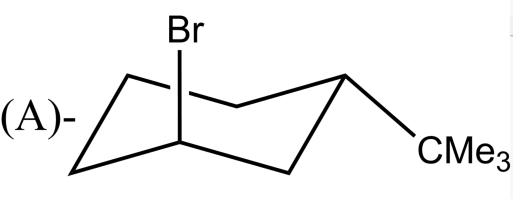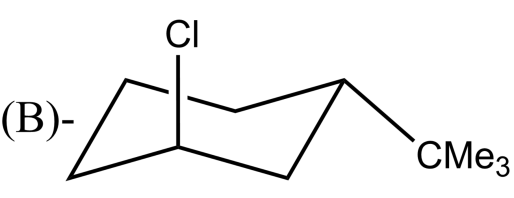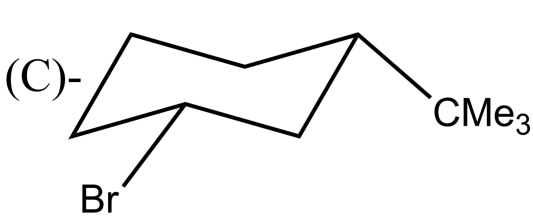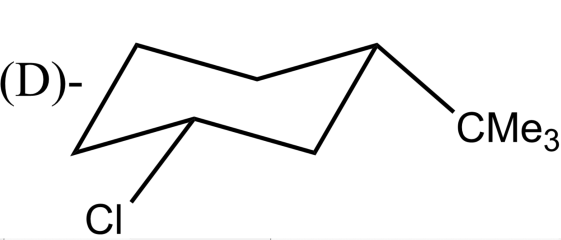Answer
396k+ views
Hint: ${{E}_{2}}$ reactions are a single step concerted reaction in which there is one transition state. ${{E}_{2}}$ reactions are seen typically with secondary and tertiary alkyl halides, but in the case of primary halide, there is a necessity of a hindered base.
Complete answer:
-${{E}_{2}}$ reactions, in order to proceed, must follow the following requirements-
(i) Secondary and tertiary alkyl halides will undergo ${{E}_{2}}$ reactions in the presence of a base like OH-, RO-, ${{R}_{2}}N-$ .
(ii) Both leaving groups must be present on the same plane. This will allow the formation of double bond giving stability to the complex.

(iii) The complex must follow Zaitsev’s rule, which is a good predictor for simple elimination reactions of alkyl halide. The most substituted alkene is usually the major product at the end.
(iv) The complex must follow Hoffman rule, which says that when an elimination reaction takes place which can produce two or more alkenes (or alkyne) products, the product containing the less highly substituted pi bond is the major one.
-${{E}_{2}}$ reactions are anti elimination which means that there must be a proton in the beta position of the leaving group. In complexes (A) and (B) there Hydrogen atom is present in the anti position of the leaving group. After the removal of the leaving group, i.e Br and Cl respectively in option (A) and (B) an alkene will be formed. Whereas the complexes in (C) and (D) do not have Hydrogen atoms in the anti position of the leaving group.
So, the correct answer is “Option A and B”.
Note: ${{E}_{2}}$ elimination reactions of alkyl halides will dominate with most of the nucleophiles, even if they are weak bases. In high dielectric ionizing solvents, the products formed maybe ${{S}_{N}}1$ and ${{E}_{1}}$ .
Complete answer:
-${{E}_{2}}$ reactions, in order to proceed, must follow the following requirements-
(i) Secondary and tertiary alkyl halides will undergo ${{E}_{2}}$ reactions in the presence of a base like OH-, RO-, ${{R}_{2}}N-$ .
(ii) Both leaving groups must be present on the same plane. This will allow the formation of double bond giving stability to the complex.

(iii) The complex must follow Zaitsev’s rule, which is a good predictor for simple elimination reactions of alkyl halide. The most substituted alkene is usually the major product at the end.
(iv) The complex must follow Hoffman rule, which says that when an elimination reaction takes place which can produce two or more alkenes (or alkyne) products, the product containing the less highly substituted pi bond is the major one.
-${{E}_{2}}$ reactions are anti elimination which means that there must be a proton in the beta position of the leaving group. In complexes (A) and (B) there Hydrogen atom is present in the anti position of the leaving group. After the removal of the leaving group, i.e Br and Cl respectively in option (A) and (B) an alkene will be formed. Whereas the complexes in (C) and (D) do not have Hydrogen atoms in the anti position of the leaving group.
So, the correct answer is “Option A and B”.
Note: ${{E}_{2}}$ elimination reactions of alkyl halides will dominate with most of the nucleophiles, even if they are weak bases. In high dielectric ionizing solvents, the products formed maybe ${{S}_{N}}1$ and ${{E}_{1}}$ .
Recently Updated Pages
Basicity of sulphurous acid and sulphuric acid are

Three beakers labelled as A B and C each containing 25 mL of water were taken A small amount of NaOH anhydrous CuSO4 and NaCl were added to the beakers A B and C respectively It was observed that there was an increase in the temperature of the solutions contained in beakers A and B whereas in case of beaker C the temperature of the solution falls Which one of the following statements isarecorrect i In beakers A and B exothermic process has occurred ii In beakers A and B endothermic process has occurred iii In beaker C exothermic process has occurred iv In beaker C endothermic process has occurred

What is the stopping potential when the metal with class 12 physics JEE_Main

The momentum of a photon is 2 times 10 16gm cmsec Its class 12 physics JEE_Main

How do you arrange NH4 + BF3 H2O C2H2 in increasing class 11 chemistry CBSE

Is H mCT and q mCT the same thing If so which is more class 11 chemistry CBSE

Trending doubts
Difference between Prokaryotic cell and Eukaryotic class 11 biology CBSE

Fill the blanks with the suitable prepositions 1 The class 9 english CBSE

Write an application to the principal requesting five class 10 english CBSE

Difference Between Plant Cell and Animal Cell

a Tabulate the differences in the characteristics of class 12 chemistry CBSE

Change the following sentences into negative and interrogative class 10 english CBSE

What organs are located on the left side of your body class 11 biology CBSE

Discuss what these phrases mean to you A a yellow wood class 9 english CBSE

List some examples of Rabi and Kharif crops class 8 biology CBSE







